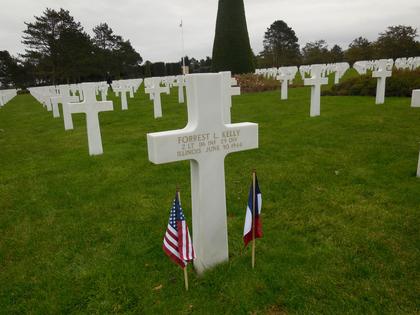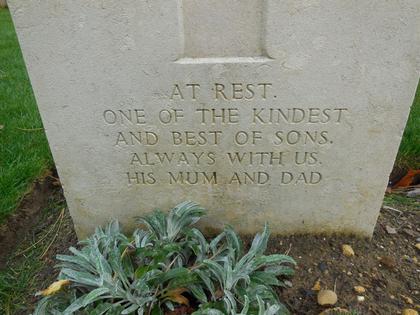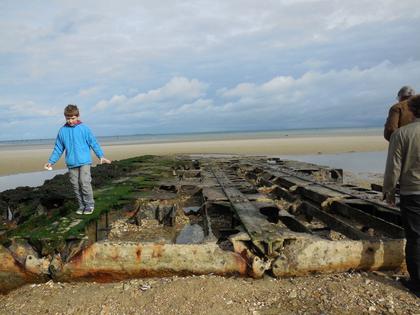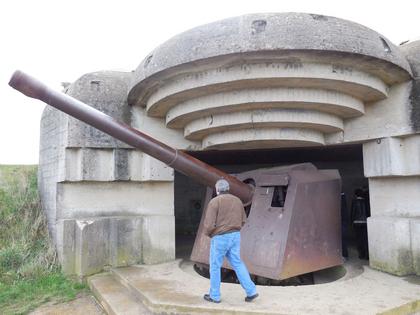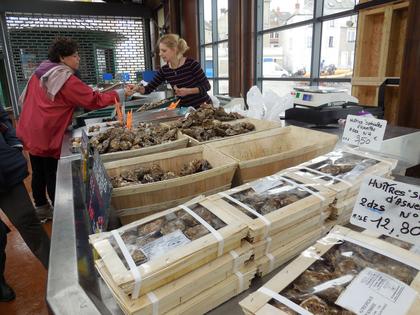Taking the Kids: Making World War II history come alive at Normandy
Elizabeth Kelly is in France, far from her Florida home, standing at the grave of a young Chicago lieutenant -- the grandfather she never met.
Forrest Kelly was just 29 when he died, leaving behind a wife and two young children, Kelly said. At the Normandy American Cemetery and Memorial, overlooking Omaha Beach, he's buried alongside thousands of young men who died too soon.
June 6 marks the 70th anniversary of D-Day, the massive allied assault that aimed to liberate France and defeat Nazi Germany, and many families, even if they can't visit, will be thinking about grandfathers and great-grandfathers, sons, uncles and cousins who fought and died here.
Visiting here is a lesson in the costs of war that kids won't likely forget. There are 9,387 headstones, including markers for 1,557 unknown soldiers, 45 sets of brothers and three Medal of Honor recipients, including Theodore Roosevelt Jr., son of the president and a 57-year-old general who led his troops ashore on D-Day and then died three weeks later of a heart attack. He is buried beside his brother, Quentin, who died in France in World War I.
We had the chance to tour Normandy's famous World War II sites with Ron Van Dijk, who oversees European tours for Austin Adventures, the American adventure company that offers bike tours here, including several summer departures for families. Touring here, said Van Dijk, helps kids, especially teens and tweens, "realize what war is all about. ... They think war is exciting, a big adventure ... this changes their minds."
Just as important, the time cycling through the bucolic countryside, the famous black-and-white Norman cows, the sweet lambs, the stone farmhouses and small villages helps to gain some perspective about those who lived through the war and those who live here now. Many of the roads in the countryside are named after Allied soldiers who died in Normandy.
There is the chance to visit a cheese factory or see cider being made, suggests Jean Marie Batran, owner of the 18th-century Chateau de Sully, just outside Bayeux, where families stay on part of the bike tour. It's a good spot to anchor yourselves for a few days. (You won't want to miss the nearly 230-foot-long Bayeux Tapestry that dates back to the 11th century!)
There's also the chance to feast and introduce the kids to new foods -- long sausage served in a crusty baguette at a farmer's market one day, fresh oysters in the small port town of Port-en-Bessin another. We met a young family at the Chateau de Sully enjoying the chef's dishes at dinner as much as we were, especially the selection of Norman cheese.
We started our tour in Sainte-Mere-Eglise, where the men of the 101st and 82nd Airborne Divisions jumped into the darkness, landing in the trees, in flooded marshes and in a schoolteacher's garden. (John Steele landed on the bell tower of the church where he remained dangling, playing dead until he was captured and then freed. Today, you can still see a model of him hanging from the bell tower.
The excellent Musee Airborne here tells the story of those brave young men. Kids can climb through a glider (with models of the paratroopers inside), making it easy to see what it would have been like aboard. We see everything from battered helmets to the baseball mitt and balls the GIs played with. Did you know more than 4,000 men were sent into the battle in 512 gliders?
...continued
(c) 2014 DISTRIBUTED BY TRIBUNE MEDIA SERVICES, INC.

